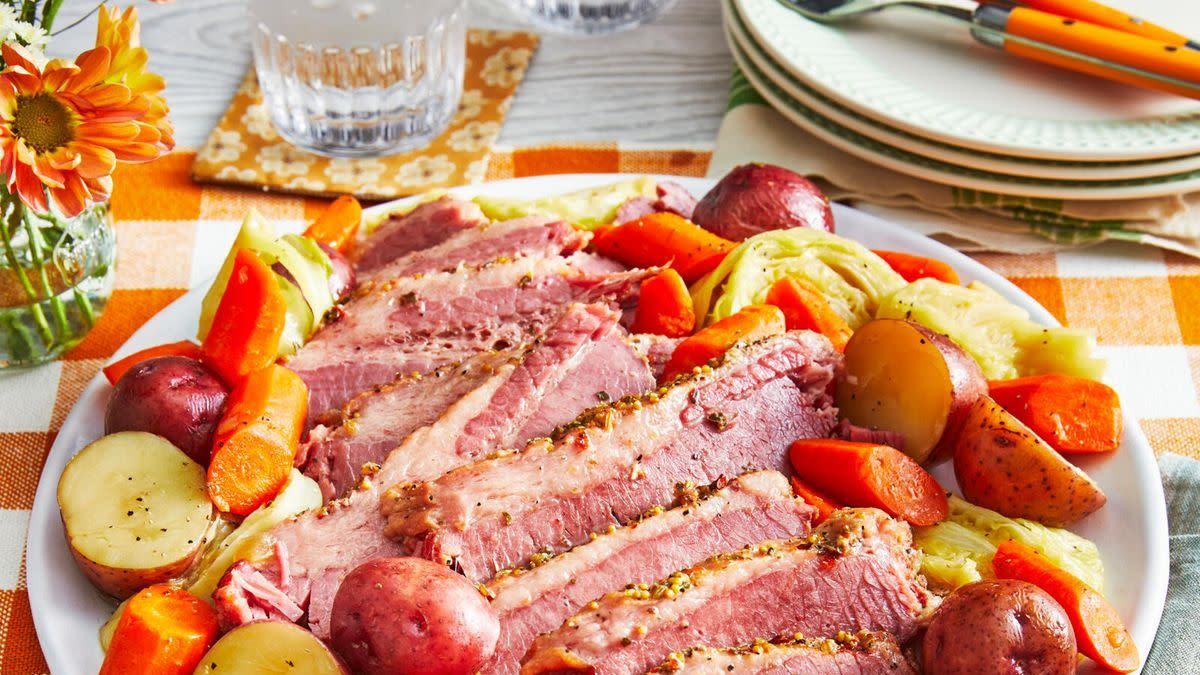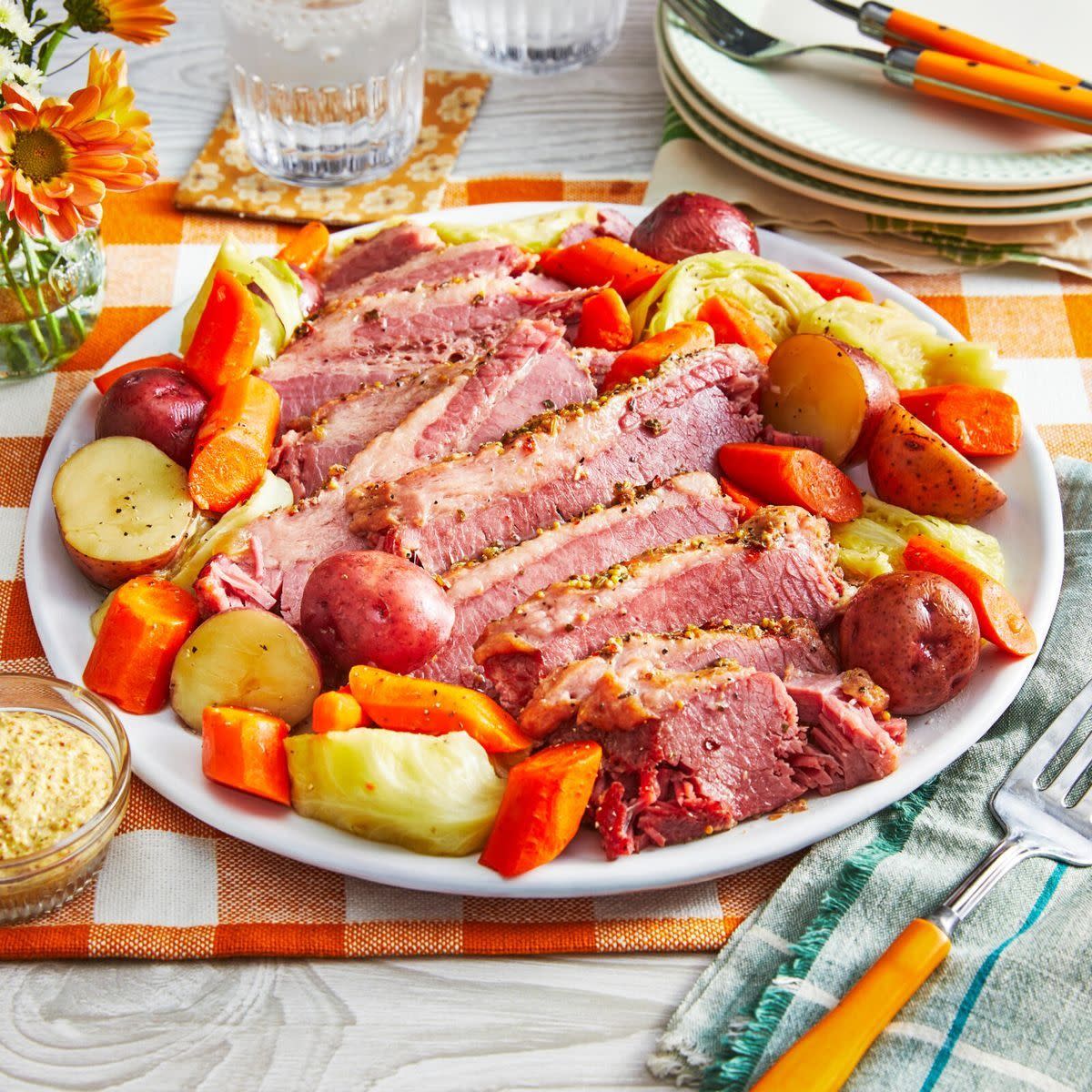What Is Corned Beef? Here's Everything You Need to Know

Ah, corned beef. We look forward to enjoying this classic dish on St. Patrick's Day year after year. Whether it's made in a slow cooker or an Instant Pot, the salty, savory flavor is hard to beat—especially when served with cabbage steaks or crispy fried potatoes. It's become somewhat of a holiday tradition (along with dressing up in all green and listening to our favorite Irish tunes). But why do we eat corned beef and cabbage this time of year? And now that we’re thinking about it: what is corned beef, anyway?
We have all the facts you need to know about this cut of meat, how it's made, and what you can do with all those corned beef leftovers. And in case you’re wondering why this information is important, just take it from Ree Drummond who once mistakenly bought corned beef instead of regular beef brisket, then marinated it in a bunch of salty ingredients. If you know anything about corned beef, it's that the result was anything but appetizing. "Note to self: Corned beef brisket does not need to be marinated in savory ingredients," Ree said.
So how should you cook corned beef for a traditional Irish dinner? Read on for everything you need to know about corned beef, including other ways to enjoy the meat throughout the year! Hint: it makes a really great sandwich!
What is corned beef, exactly?
Corned beef is made from beef brisket that's been cured in a solution of salt and spices like coriander, mustard seeds, bay leaves, juniper berries and black peppercorns. Historically, it was made with large salt kernels that resembled corn (hence the name), but today, corned beef is typically made with a salt brine, similar to pickling, where the meat becomes tender after the long, salty cooking process (which can take up to a week or more).
Wondering how it gets that pinkish hue? Many times, there's a pink salt-nitrate blend that's used to cure the meat. You might recognize the ingredient from other cured meats with a pink color tone like hot dogs and ham.

Is corned beef a healthy meat?
The answer to this is: yes and no. For one thing, corned beef is a good source of protein, so it'll keep you full no matter how many St. Patrick's Day activities you have planned. It's also known for being a good source of B vitamins and iron. On the other hand, corned beef is high in fat and made in a salt brine, so it’s inherently high in sodium. As for the sodium nitrate that gives corned beef its distinct pink color, some studies say that high levels of the preservative can be unhealthy, which is why it's best to enjoy in moderation.
What makes corned beef different from regular beef?
The short answer: taste! Corned beef is essentially beef brisket that's been cured in a salty mixture so your corned beef will have a saltier taste compared to regular beef. That means, it's important not to substitute corned beef for regular beef in most cases, otherwise the end result might be too salty. One exception you might be wondering about is pastrami, which is another popular deli meat made from a different cut of beef. Corned beef and pastrami are both cured with salt and spices, but pastrami will have a little extra spice and flavor.
Here's the thing: both pastrami and corned beef are delicious on sandwiches. Corned beef is most commonly used on the classic Reuben sandwich (made with sauerkraut and Russian dressing), but it's also delicious on other corned beef sandwiches made with mustard or pickles.
Why do we eat corned beef on St. Patrick's Day?
Corned beef and cabbage is more of an Irish American tradition compared to something you might find in Ireland itself. That's because the Irish typically enjoy ham or bacon with their fried cabbage and potatoes. According to Irish Central, when people immigrated to America in the mid-1800s and early 1900s, "corned beef was the meat that they could easily and more cheaply get their hands on." In fact, many Irish immigrants lived in the same neighborhoods as Jewish immigrants and took to buying kosher meats, like brisket from the Jewish butchers. The mingling of cultures is why you’ll see Irish corned beef often made with brisket today.
You Might Also Like






